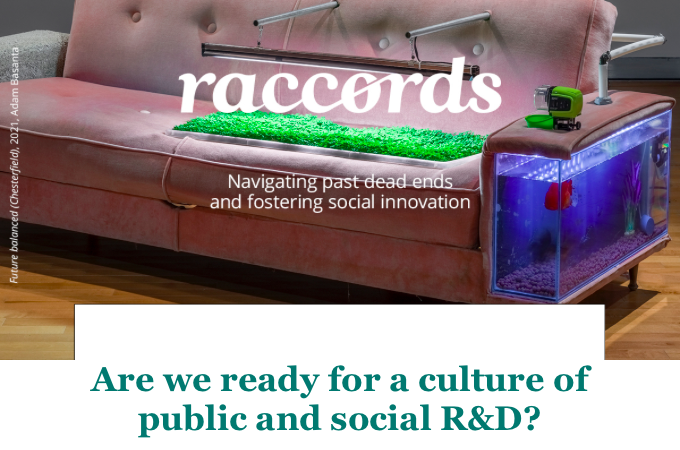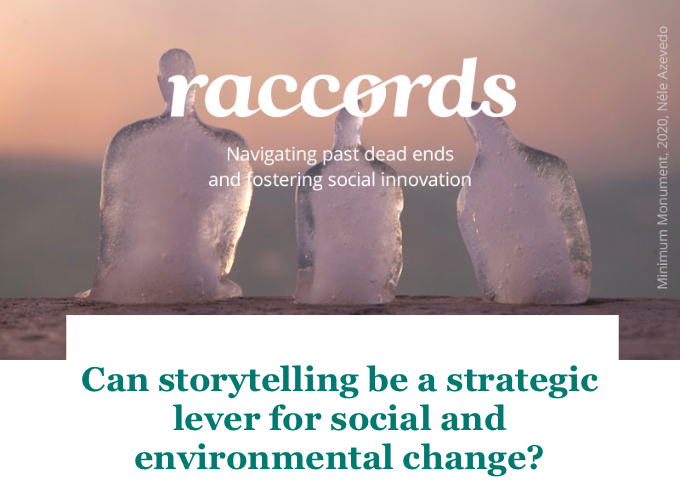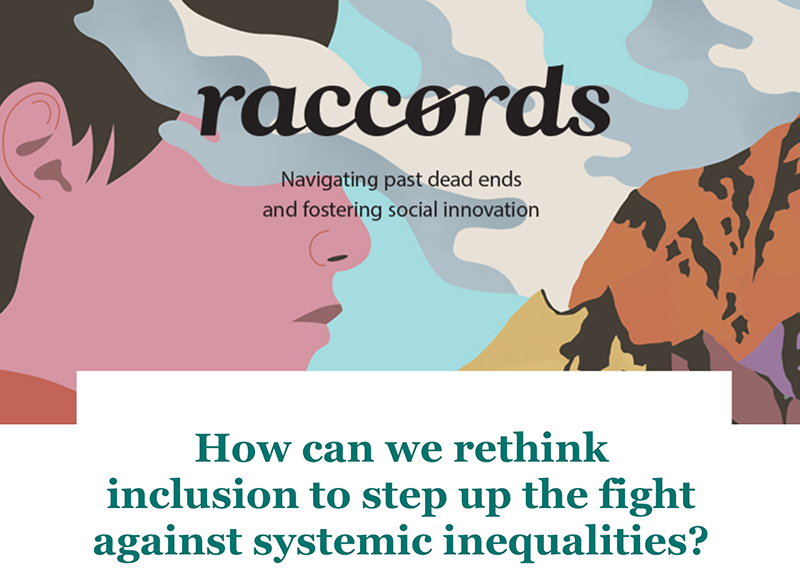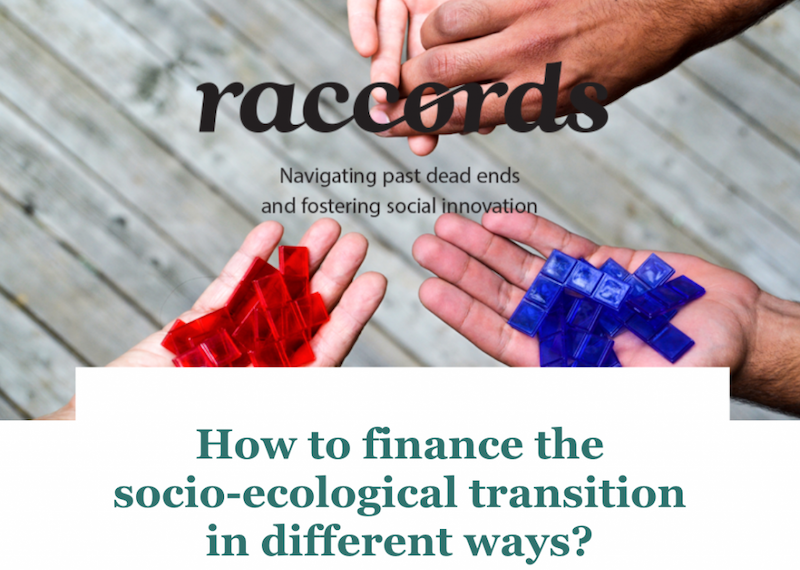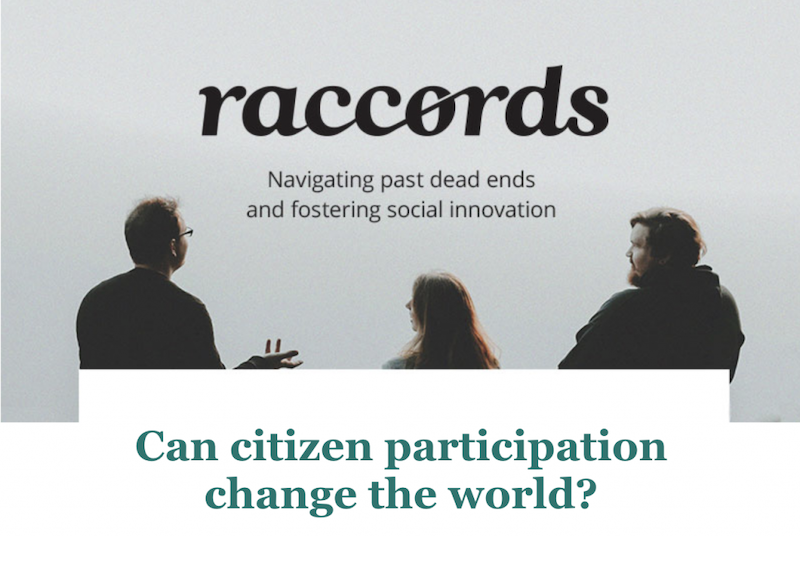#09, September 2021
THE INTERVIEW
How to build a transformative narrative?

For impact organizations working daily on social and environmental challenges, engaging stakeholders is a crucial lever in the attainment of their objectives. However, there’s a significant gap between raising awareness of any issue and triggering concrete action towards its resolution. This challenge is exacerbated when dealing with stakeholders who think differently and don’t naturally subscribe to our goals. Far from being trivial, our ability to rally people to a cause draws on the social and behavioural sciences and the art of storytelling.
In this exclusive interview for Raccords, Annie Neimand, Research Director of the Center for Public Interest Communications at the University of Florida, shares some key communications strategies that can truly move people to action.
Raccords: What motivates people to create positive change? What is the science behind crafting a story that will drive people to take action?
Annie Neimand: In our research at the Center for Public Interest Communications, my colleagues and I have found that social-impact organizations often start with the assumption that sharing information will suffice to change people’s minds. But our analysis shows that this doesn’t work. Your end goal should never be to just raise awareness. People don’t act or change their minds just because they have more information. If they don’t act, it’s either because they don’t know how, or because they don’t care. That’s a very different challenge!
We’ve spent the last eight years studying the science of how to make people care and how to inspire them to act. We’ve identified five principles that work across contexts and issues. Whether you’re a grassroots organization or a very bureaucratic one, these principles will inspire people to care as much as you do about the work that you’re pursuing.
1. Step into the world of your audience and tailor everything you say to it. We know from research that people have different identities that are really important to them, and different values that drive them and shape how they respond to issues. Their worldviews impact how they think about problems and their solutions. If you want people to care about your issue, talk about it in a way that aligns and resonates with their values, identities, and worldviews. Leading with your own arguments will only work with people that are like you. To craft communication that will connect with your audience, ask yourself what they care about and what problems they need to solve. Connect to that. Only then will they be more open to that information, or more likely to change their behaviour.
2. Use visual language. A lot of work around climate change and social justice issues relies on vague, abstract concepts that leave a lot of space for people to insert their own meaning. If people have biases or assumptions that are inaccurate, they will most likely take the wrong message away from ambiguous terms such as ‘racism’, ‘injustice’, or ‘freedom’. Rather than relying on those terms, use visual language to paint a picture of what those terms look and feel like. For instance, in the work we did with the United Nations Refugee Agency’s Innovation Service, we explored how to best communicate about displacement in the context of climate change. We suggest that rather than using terms like climate refugees —which is technically not accurate for certain displaced people moving because of climate change and disasters— communicators should use visual language. For example, you might describe a family that had to move because of a fire that destroyed their home or a drought that has made it impossible to farm, an important source of income for the community.
3. Use emotion with intention. We often hear organizations and activists say, “I just want to pull on heartstrings! I just want people to care.” To do that, they will often emphasize the sadness of a protagonist’s situation. But research tells us that if we use sadness over and over again, people will tune out. They will feel that any action they take will be just a drop in the bucket that will not resolve that sadness. It turns out that we don’t need to rely on sadness: Science tells us that there’s a full range of emotions that can be effective! Each one can motivate us to do different things. Awe, for example, is a really wonderful, positive emotion that opens us up to understanding new perspectives. We are more likely to give our time to other people if we experience awe. The film Chasing Coral, which is a climate change story produced by Exposure Lab, creates an experience of awe and wonder through the beauty of coral reefs. We see them through the eyes of Zack, its main character who is awe inspired when he sees them for the first time in the ocean. When confronted with the loss of coral reefs from his perspective, we care as much as he does about saving them—because we have experienced awe with him. Hope is also an important emotion. Stories about climate change are so often apocalyptic: “We’ve passed the point of no return! What are we going to do?” Stories of hope give the audience a sense of power and agency that makes them feel they can actually solve the problem. It’s a very actionable emotion.
4. Provide clear calls to action. When people think about how to solve a problem, like climate change, or racism, or violence against women, they often don’t know what to do or where to start. They feel overwhelmed. We have to create really specific types of calls in order to make people feel capable of taking action. Here are key elements of strong calls to action:
- People have to believe it’s within their power. The call to action has to feel like something they, as individuals, can do—something that’s within their ability. It can’t be big and ambiguous; it has to be very specific! Let me illustrate this. A study done by Melanie Rudd tested different calls to action with two different groups of participants. One was given the ambiguous task of making their campus more environmentally friendly, and the other was given the more concrete task of increasing recycling of a particular material on campus. For participants in the second group, who had a specific call to action, the outcome of the project was closer to their expectations than it was for the first group, which had to execute a less well-defined project. Ultimately, the members of the second group felt more successful and the research believe that, as a result of those positive feelings, those participants were more likely to volunteer again.
- A great call to action also has to feel like a social norm. For example, researchers at Stanford University put up signage in the cafeteria intended to increase the number of people buying vegan lunches. They found that messaging that talked about how many students were purchasing such meals created the perception of a new social norm and increased the sale of vegan lunches.
- A call to action has to be easy to do. If it feels too outside of people’s routines or habits, if it’s too hard and requires them to do something that they’ve never done before, it will inhibit action. I recall a great campaign from Colorado which encouraged its residents to conserve water. The campaign strategists initially used messages like “Conserve Water,” which proved to be too vague, ambitious, and ambiguous. You can imagine that people may have wondered if that meant avoiding watering their lawns or taking fewer showers. A new campaign put out a call to action that was easy to carry out, specific, and within their audience’s means and routine: “Use what you need, water two minutes less.” As a result of that campaign, water usage among residents was lowered to levels not seen since the 1970s, despite the fact that the city population had increased in the intervening years.
- Lastly, if you want people to take action, they have to believe that their action will not be just a drop in the bucket. They need to believe that they will actually make a difference.
5. Build better stories. We know that storytelling is the most powerful tool we have. If we don’t provide a story, people will make one up in their own minds. At the Center for Public Interests Communication, we’ve spent a lot of time studying the science of stories and how to build a storytelling strategy. It’s really important to be able to tell stories about your work in order to help people care.
Raccords: Let’s talk about building better stories. What are the key strategies in powerful storytelling for social impact, and what are the most common pitfalls? Can words alone make a difference?
Annie: First of all, taglines, messages, and vignettes are not stories. Organizations need to tell stories—and stories follow a narrative arc: They have a beginning, a middle, and an end. They have conflict and resolution. They have characters and a setting, and a moment when you’re on the edge of your seat, wondering what’s going to happen next! Without these elements, you miss out on all the cognitive benefits that are inherent to storytelling and narrative processing.
At the Center for Public Interest Communications, a lot of our work focuses on the research around narrative transportation. If you’ve ever been immersed in a television show or a great book to the point where you lost track of time and forgot where you were, then you’ve experienced what researchers call narrative transportation. Whether it is fiction or a true story, when people become immersed in a narrative, the experiences they have in the world of the characters become their own and can serve as a framework for their own beliefs. A story is a powerful tool for persuasion and belief change. Researchers are now asking how we can increase the likelihood that a reader or viewer will experience narrative transportation. To do that, they are testing variables like mood, gender, and personality. But three elements seem critical for increasing the chances of having a narrative-transportation experience:
- Include characters in your story that people like and root for. When we like characters, we’re more likely to see the world through their eyes and share their experiences.
- Include characters that they can identify with in terms of demographics, values, or experiences.
- Use vivid imagery. Films, photographs, and images are great. But if you don’t have the budget for these media, you can use vivid language to paint a picture that will help your audience imagine and experience the world of the story.
Another important factor is to make stories feel authentic and true. Research suggests that when stories come from the people who are most affected, who are actually living the experience, they feel more true.
If you build your story according to the principles of narrative transportation, authenticity, and plot structure, it will be much more compelling and powerful to your audience, and it will have a greater impact on them.
Raccords: Systemic change comes about with cultural shifts and counter-narratives. How can storytelling accelerate such cultural shifts and transform awareness into action?
Annie: Research tells us that when we’re emotionally invested in a great story, it can change us and drive us to take action. Yet even a really great story won’t create meaningful social change if it’s not paired with a smart strategy. People will say, “That was a great story. Wow! What do we do now?”
Here are four deceptively simple questions that we’ve developed that can help you think about your strategy. Ask yourself:
- What do I want to be true that is not true now? What is the thing that I’m trying to make happen that isn’t true yet? Focus on the specific change that you want your target audience to make.
- Who has to act to make that thing happen? People have different values, worldviews, and identities. To reach everyone at once is impossible. You need to narrow in on a specific person or group of people. Be specific about who you are designing your communication effort for.
- What will speak to their beliefs and motivate them to take action? This is where storytelling comes in and where you really need to know who you’re talking to. You have to think like an anthropologist and listen to what your audience cares and thinks about. You’ll want to spend a lot of time with members of a community so you can understand them—and build trust with them. A message is only as effective as its messenger. When crafting your messaging and storytelling, think about what your audience cares about and who, in their in-group, can best deliver this message and inspire them.
- Where is their attention? This question will help you think about tactics. Remember that you are competing for the attention of your audience, so ask yourself: What are they paying attention to? What are their habits, and how can you insert yourself into the routine that already has their attention?
Raccords: Is it unrealistic to think that powerful storytelling can overturn the beliefs of unyielding skeptics and get their buy-in for positive social or environmental action? Are individual biases insurmountable obstacles to such an approach?
Annie: Look at climate change documentaries like Chasing Ice and Chasing Coral. These films moved the needle on climate change a little bit. And they did this by telling compelling stories that connect climate change issues to what people care about and through smart storytelling strategy.
Stories that are told over and over again give rise to new narratives. Bridget Antoinette Evans, one of my favorite cultural change strategists, suggests we have to create narrative environments that immerse audiences in new ways of seeing. She believes that we should not rely on the idea of just putting out a story and hoping that the world will change. Doing so, she says, would be like dropping red food coloring in a vast ocean of blue water and expecting the ocean to turn purple. You would need to put millions of drops of red dye in the ocean to start to change its colour. I also believe that we have to think about narrative change in the same manner. We should all work collectively, as movements, to shift the narrative environment of communities. When we do that, the culture of those communities, their norms and their policies, will begin to change.










